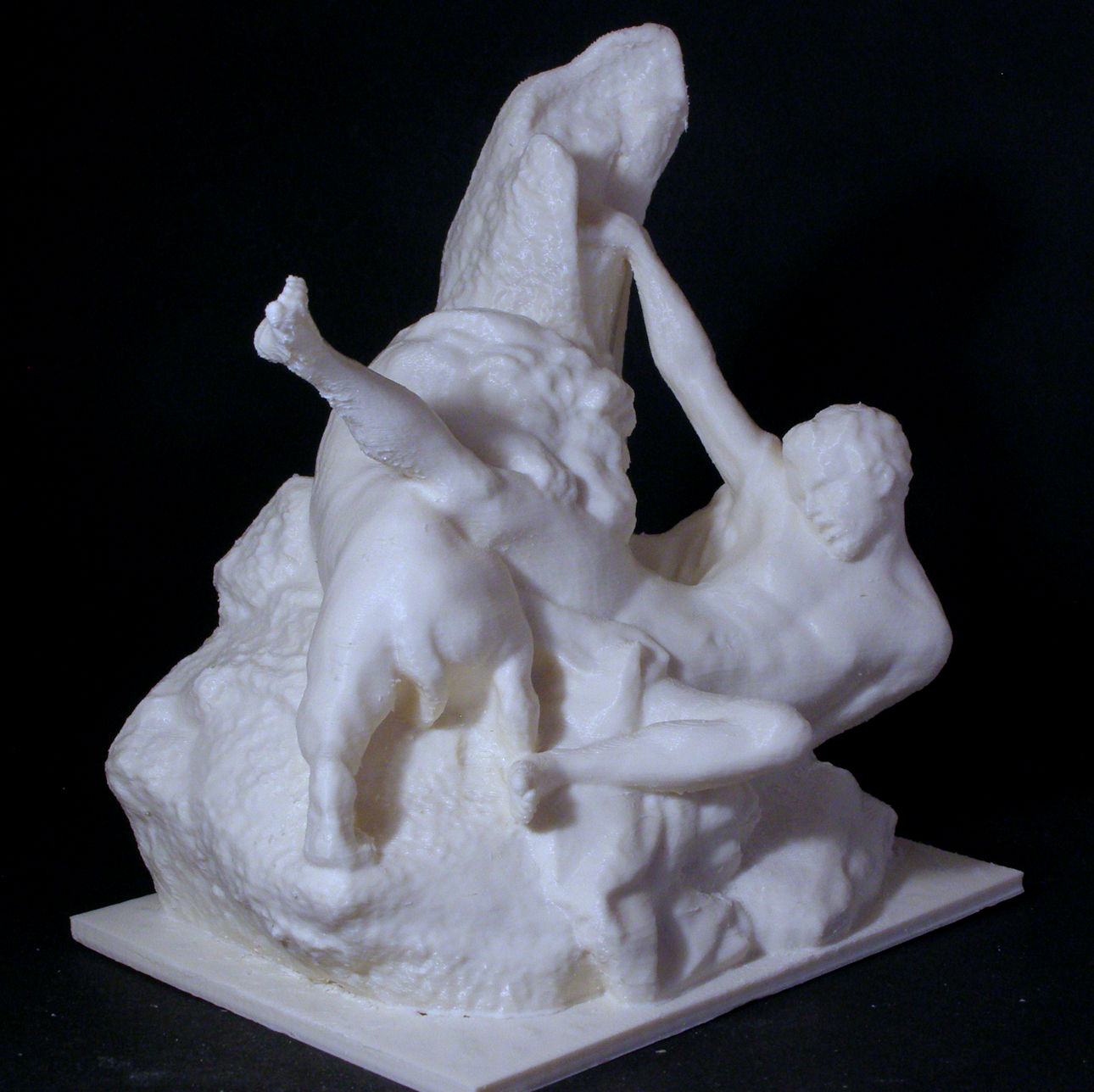
Milo of Croton
myminifactory
When the Greek athlete Milo grew old, he determined to test his legendary strength by attempting to split open a cleft tree trunk; his hand remained trapped in the trunk, and he was devoured by wild animals. In this sculpture, he screams his helplessness, his eyes fixed on the lion, his muscles taut with strain. Falconet chose to tackle this subject in order to challenge himself against the sculptor Pierre Puget, a formidable reference. Ten years between the plaster model and the marble sculpture The Royal Academy of Painting and Sculpture approved Falconet's plaster model on 29 August 1744, while criticizing him for the work's resemblance to that of Pierre Puget (in the Louvre). He was asked to create a different piece for his reception: a Genius of Sculpture, the model for which was approved in 1745. However, the Academy then changed its mind, instructing Falconet to make the marble of Milo. After a ten-year wait, Falconet was accepted into the Academy on 31 August 1754. Falconet and Puget: two versions of Milo Falconet's choice and energetic treatment of his subject clearly stemmed from a desire to challenge himself against his distinguished elder, for whom he had always expressed great admiration. The Academy's suspicion of plagiarism was obviously unjust, however. Puget's Milo is standing, pushing away the head of the lion that is biting him; if his other hand were not trapped, he would surely triumph. In Falconet's version, Milo is defeated, knocked to the ground, his right leg flailing in the air, his left straining in vain. The cleft in the tree is essential to Puget's composition, but secondary here. Puget focused on the suffering man, relegating the lion to the background; Falconet concentrated on the confrontation between man and wild animal, positioning their heads at almost the same level, setting savagery against pain. The lion's anatomy and expression are rendered with naturalistic vigor, whereas Puget's lion is almost heraldic. Baroque naturalism The theatricality and virtuosity of this work are of baroque inspiration: the sweeping diagonals, the twisting of the bodies, the lifelike flesh, the opposition of light and shade, the paroxysmal expression (Milo's face was inspired by Bernini's Damned Soul, in Santa Maria di Monserrato, Rome). Falconet demonstrated his technical and compositional skill, his anatomical knowledge, and his mastery of foreshortening (with the figure of the lion). However, when he presented his marble sculpture at the Salon of 1755, its style clashed with the contemporary taste for antiquity: despite its generally favorable reception, it was soon criticized for lack of nobility. The naturalism of the sculpture offended: Falconet had idealized neither the body (he portrayed the folds of the abdomen and the hairs on the chest) nor the face (a self-portrait with a snub nose). His vigorous portrayal of Milo also clashed with the classical ideal that required a dying hero to express stoic restraint.
With this file you will be able to print Milo of Croton with your 3D printer. Click on the button and save the file on your computer to work, edit or customize your design. You can also find more 3D designs for printers on Milo of Croton.
